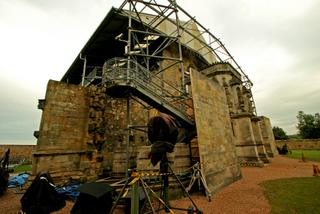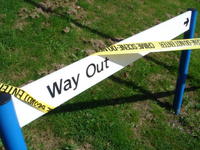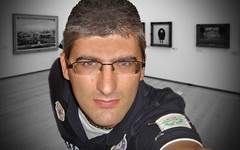This Blog featured on BBC website

This is a special blog entry to welcome visitors to my site who have clicked through from BBC Scotland. I do hope you enjoy your visit to my online web log.
I was thinking what I could write for any 'click through' visitors and decided that I'd talk a little about blogging itself, after all its because of my blog that my article was featured and you are here.
I suppose that blogging is what journalism was. Journalism itself was born out of a process of people who journaled what they saw or what they heard and this is basically what lots of people do in their blogs today. The world of journalism has grown a lot since those days of a single weekly newspaper, yet its still possible to see those same basic traits of story telling in everything from TV reports to newspaper features and yes, even humble blogs like this one.
Some blogs like mine are pretty obscure while others can attract thousands of visits a day but for many web writers (or 'Bloggers') its not the number of people who visit that is important, rather its just the ability to record thoughts down in a way that's inkeeping with 21st century life.
What kind of people 'blog'?
The world wide web has often been associated with a certain kind of person. Someone who spends far too long huddled over the box on the desk in the corner of the room or maybe a social misfit who has problems keeping personal hygiene in check but as we march on into the digital age, this image should be erased from everybody's hard drives. We now live in an age of online shopping, holiday planning, photo sharing and music downloading. Computers have become communication tools like the telephone and in some cases the two have even been combined. Its out of this kind of culture that the blogger pops up. Anyone who can type and use a mouse can blog so you will find entries from every kind of person, not just the computer whizz's
Should I blog?
If you like what you see here then yes, if you think you can do better than what you see here then yes definitely! Once we realise that blogging can be another way of communicating to family and friends (and complete strangers!) about who we are and what we do then blogging can appeal to anyone. From family members who want to post pictures and text from holidays or periods away from home to hobbyists and group members who want to share their work within a community, bloging can make a really effective way of saying something powerfully and effectively.
How can I make a start?
You are only a few clicks away from having your own blog, even as you read this. There are many free blog sites on the web, like this one at www.blogger.com and its really easy to set up your blog and get typing in a matter of minutes. You could even make a start after reading this! If you do, be sure to post a comment on this page and let me know, the link is at the bottom of the article
And finally
Once your blog is set up, you'll often find things to write on (or 'post') so always be ready with your mobile phone camera, just in case you capture a picture to go along with your text. And, if writing is not enough, you can even feature your work as an audio recording called a 'podcast'.
The guardian recently had the headline "we are all journalists now" and with podcasting and online web loging, more and more people are realising that there is a platform for what they want to communicate and who knows, maybe some of it will end up on the BBC's website?




 The Chapel of Rosslyn redies itself for Hollywood
The Chapel of Rosslyn redies itself for Hollywood













